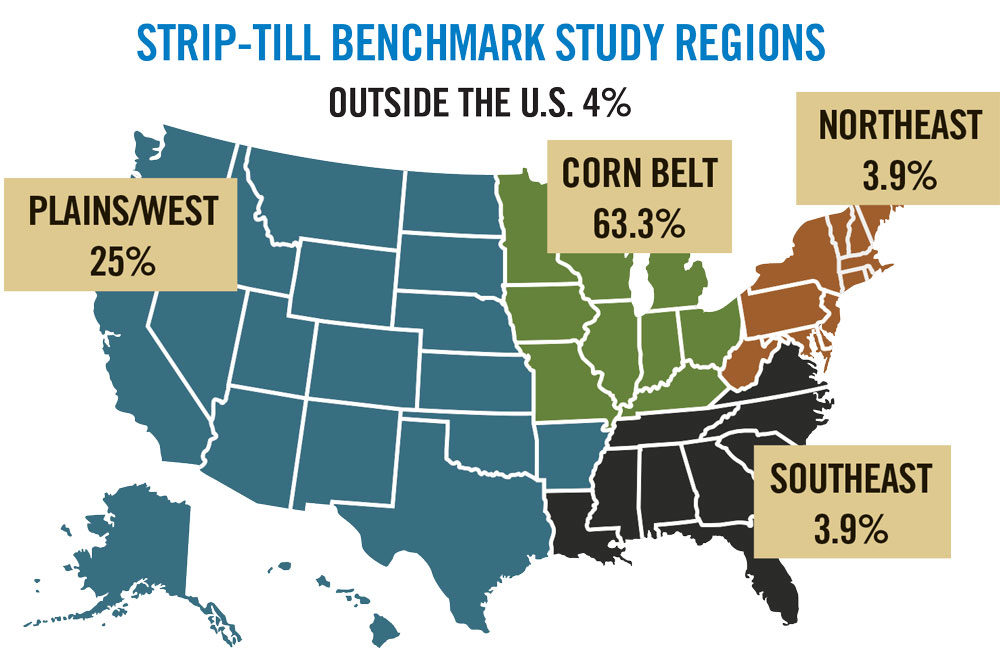No-Till Farmer
Get full access NOW to the most comprehensive, powerful and easy-to-use online resource for no-tillage practices. Just one good idea will pay for your subscription hundreds of times over.

Results of the 8th annual Strip-Till Operational Practices Benchmark study suggest a “return to normal” for many strip-tillers whose fall berm-building plans were disrupted by wet weather in 2019.
In the following pages, we compare and contrast equipment setups, berm-building preferences, nutrient management strategies and other practices strip-tillers are putting to work on their operations.
This industry-exclusive study evaluating 2020 strip-till practices found that while the percentage of growers building berms in the fall decreased from 46.1% in 2018 to 31.6% in 2019, the practice was back up to 43.1% in 2020 — but nowhere close to the 2017 high of 53.6%.
Interestingly, spring strip-till also went up in 2020, though only slightly, from 33.6% in 2019 to 35.8%. Those who build berms in both fall and spring dropped to 21.1% in 2020 from 34.8% in 2019.
Overwhelmingly, strip-tillers favor 30-inch rows, with 84% of strip-tillers using that configuration. Twelve-row strip-till bars are most popular (38%), followed by 16-row (25%), 8-row (17%), 6-row (14%), and 24-row(5%). A majority (58%) are using shanks to build their strips, followed by a coulter system (40%) and mole knives (22%).
The majority of survey respondents hailed from the central U.S., with more than 60% located in the Corn Belt states. The Plains and Western states were also well-represented at…